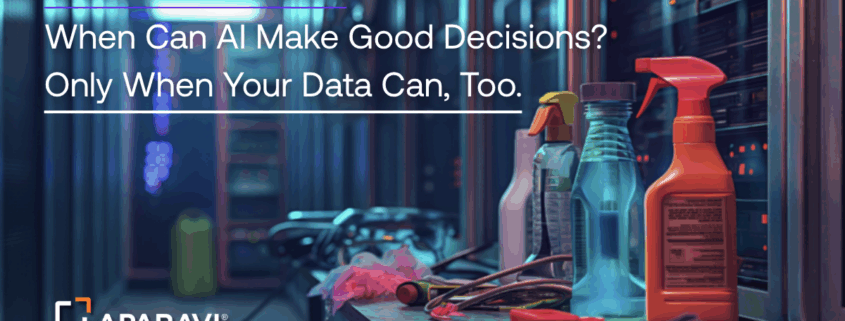When Can AI Make Good Decisions? Only When Your Data Can, Too.
There’s a lot of buzz about AI decision-making and for good reason. The promise of AI is massive: faster operations, sharper predictions, smarter automation. But here’s the truth few are eager to admit: AI is only as good as the data feeding it.
A recent McKinsey article dives into the concept of AI as a corporate “citizen”- a tool that doesn’t just assist decision-making, but becomes part of it. And while the article focuses on how to govern and trust AI at a strategic level, one point can’t be overstated: You can’t have trustworthy AI without trustworthy data.
Let’s talk about it.
Garbage In, Garbage Out Still Applies
Before an AI model can “decide” anything, it needs inputs- millions of them. Those inputs come from your company’s data: documents, emails, PDFs, databases, shared drives, Slack threads, invoices, spreadsheets, and more.
Now ask yourself: how much of that data is actually usable?
If your unstructured data is mislabeled, duplicated, outdated, or just plain messy, your AI will reflect that mess. It might “decide” things, but not necessarily good things. Or ethical things. Or even legal things.
AI is not magic. It can’t see what it can’t access, and it can’t reason with what it doesn’t understand.
The Hidden Risk in AI Governance
The McKinsey piece explores how AI systems need governance, accountability, and transparency. That’s absolutely true. But you can’t govern an AI’s decision if you don’t understand the data behind it.
If a model is trained on biased, incomplete, or irrelevant data, no amount of oversight will undo that foundation. It’s like appointing a board of directors to review the decisions of a leader who’s only ever read the wrong memos.
Governance doesn’t begin with policies. It begins with knowing your data.
Think of Data Hygiene Like Personal Hygiene
Here’s a simple metaphor: AI without data hygiene is like a surgeon skipping handwashing. You might still get through the operation, but the risks go way up.
- Maintaining good data hygiene means:
- Cleaning up duplicates and redundant files
- Labeling and classifying data correctly
- Making sure the right people can access the right data and the wrong people can’t
- Regularly reviewing what data you’re storing and why
This isn’t just IT’s job anymore. It’s a strategic imperative for any organization hoping to use AI responsibly and effectively.
Responsible AI Starts Before the Model
Everyone’s racing to implement AI, but not everyone is preparing their foundation. The companies that succeed with AI, the ones who unlock real value, are the ones treating their data with the same level of care as their algorithms.
Before you plug data into a model, ask:• Is it current?
- Is it accurate?
- Is it complete?
- Is it representative?
- Is it governed?
If the answer to any of these is “I’m not sure,” your AI isn’t ready. Not yet.
Final Thought: Don’t Let Data Be the Afterthought
The McKinsey article rightly focuses on how to elevate AI as a reliable part of the decision-making fabric. But the groundwork begins long before the model spits out a recommendation. It starts with data: clean, classified, context-rich data.
You don’t need perfect data. You need prepared data. And that preparation makes all the difference between AI that adds value and AI that adds risk.
Want to make sure your data is ready before you build?
Explore how Aparavi helps teams prepare, pipe, and activate unstructured data for AI. Because smarter AI starts with smarter data.



